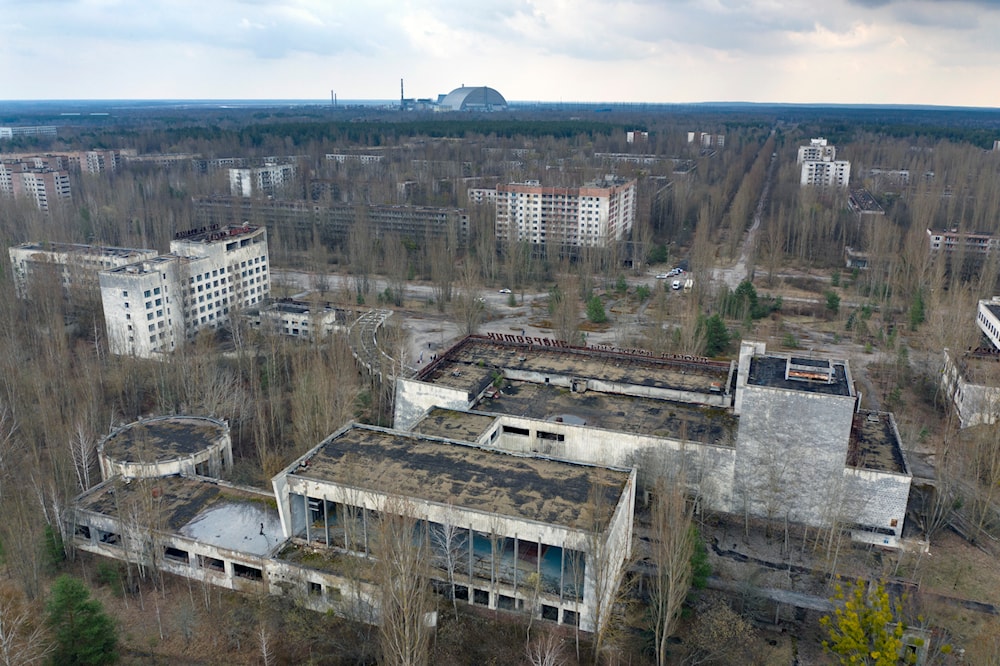Scientists discover worms immune to Chernobyl fallout
US scientists find worms in the area of the Chernobyl nuclear reactors that showed no signs of DNA mutation following the fallout.
-

A view of the ghost town of Pripyat with a shelter covering the exploded reactor at the Chernobyl nuclear plant in the background, Ukraine, April 15, 2021. (AP)
The DNA of a common nematode worm species in the Chernobyl Exclusion Zone (CEZ) has shown remarkable resistance to damage from chronic radiation, according to a study conducted by New York University (NYU) biology Professor Matthew Rockman and postdoctoral associate Sophia Tintori.
The findings, published in the journal Proceedings of the National Academy of Sciences (PNAS), could potentially lead to advancements in cancer treatment.
The CEZ, which has been off-limits to humans since the 1986 nuclear power plant meltdown, provided a unique laboratory for the researchers.
Armed with Geiger counters and clad in protective gear, Rockman and Tintori collected samples of Oscheius tipulae, a nematode worm species, from various locations with varying levels of radiation. The worms were found in soil, rotting fruits, and other organic materials.
"These worms live everywhere, and they live quickly, so they go through dozens of generations of evolution while a typical vertebrate is still putting on its shoes," Rockman explained in the press release announcing the study results.
The researchers sequenced the genomes of 15 worms collected from Chernobyl and compared them to five lineages of nematodes from other locations. Surprisingly, despite differing tolerances to DNA damage among the worm lineages, these differences did not align with the radiation levels at the collection sites.
Rockman and Tintori stated that they "could not detect a signature of radiation damage" in the Chernobyl worms. While cautious not to draw premature conclusions, the researchers expressed optimism that their findings could contribute to advancements in cancer treatment and related medical fields.
This discovery follows a recent study conducted by the University of Princeton, which revealed wolves living in the CEZ exhibit high resistance to cancer. Combined, these findings raise intriguing possibilities for understanding and harnessing the biological adaptations to radiation exposure for medical purposes.
The Chernobyl Nuclear Power Plant explosion in 1986, the result of one of four reactors exploding, released 400 times more radiation than the atomic bomb the United States dropped on Hiroshima during World War II, leading to the evacuation of over 100,000 people from the nearby city of Pripyat.
The CEZ, located approximately 100 km north of Kiev, Ukraine, has remained uninhabitable for humans ever since.

 2 Min Read
2 Min Read








